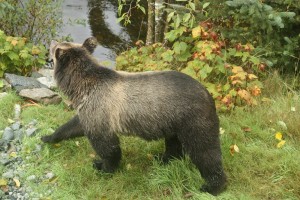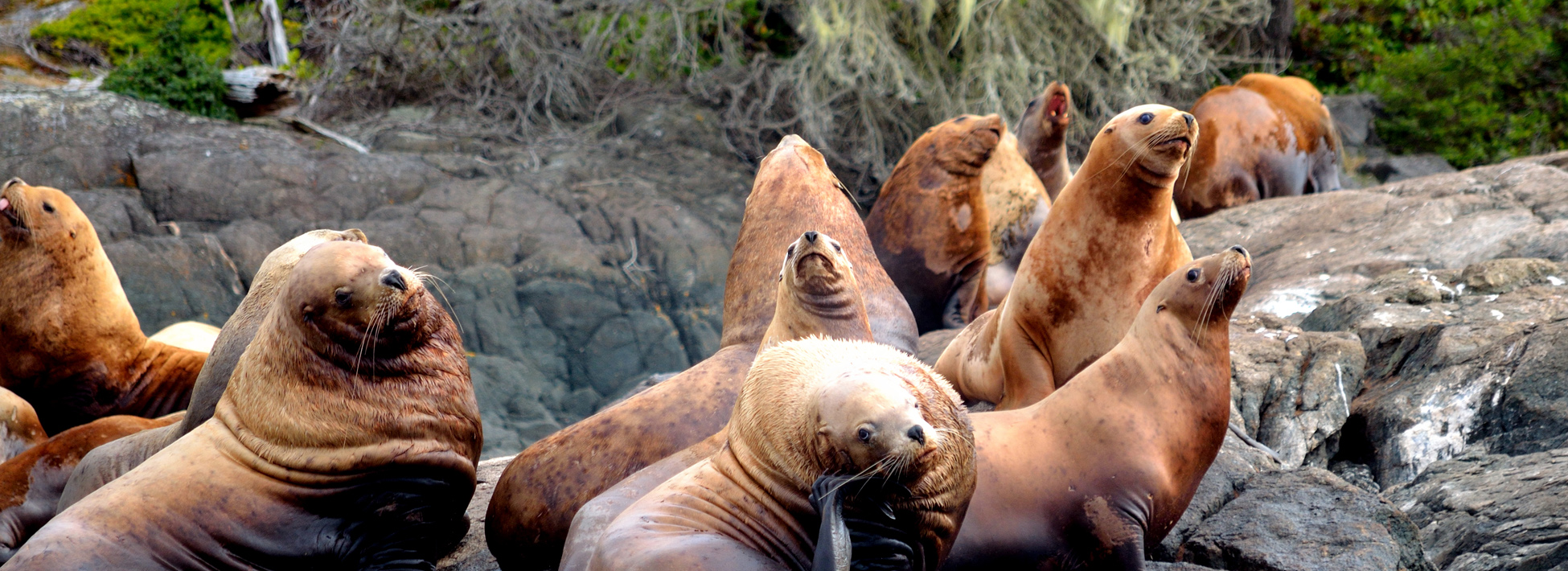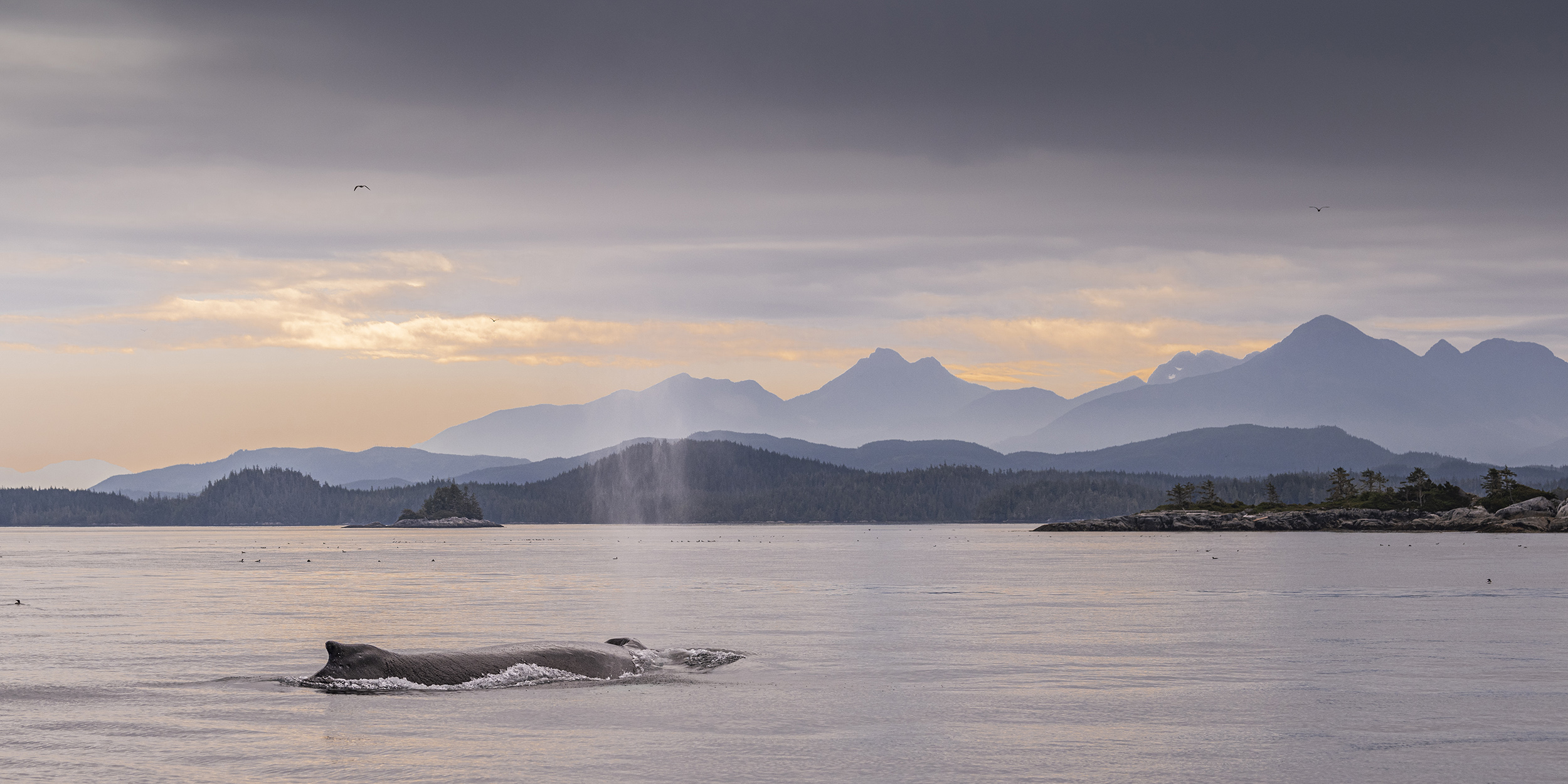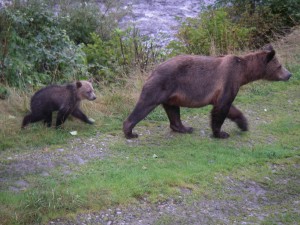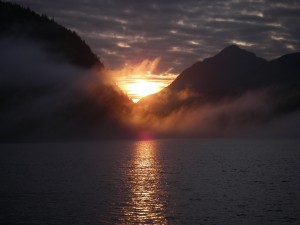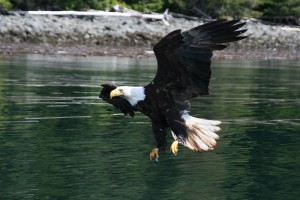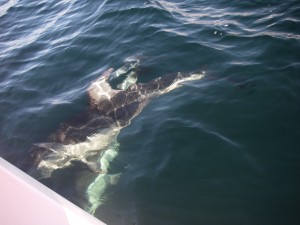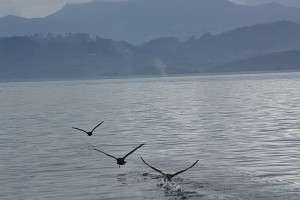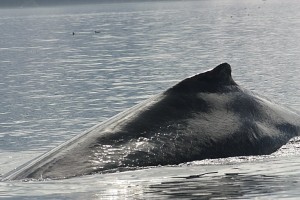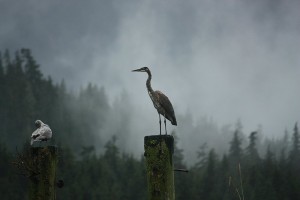Grizzly Bear and Wildlife Viewing Blog: Monthly Archives: August 2013
Grizzly Bear Lodge’s front deck sunrise
Early risers get the sunrise at Grizzly Bear Lodge. The guides are up at 6:30 setting out breakfast, fresh coffee and getting our boats packet with picnic lunches and drinks for the full day ahead. Guests are called by seven and we like to be underway by eight although some guests (depending on how long they have been in British Columbia) are up waiting for the guides. The overcast sky looks ominous however Knight Inlet does attract that low morning cloud but it is gone before noon for the whale watching safaris which travel toward the Johnstone Strait area. For the grizzly bear tour which heads up the inlet is gone by the time you reach Glendale Cove around nine.
Eagle eye
A great bald eagle picture provided by Glen one of the lodge’s guides. Some guests manage to obtain good “diving” eagle pictures but Glen seems to have the edge. As is the case with most wildlife photography – “opportunity, opportunity, opportunity”. The more time one is able to spend taking picture the more likely that there will be a great one. I am not belittling Glen’s success, as that is his own philosophy. I keep say that it is only partially true one need an “eye” for composition and Glen definitely has the “eye”.
Grizzly Bear viewing close up
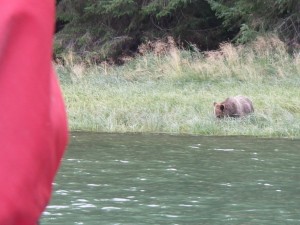
The red coat in the corner of the picture is intentional to show how close the grizzly bear viewing can become. The grizzly bear tours travel up Knight Inlet to the Glendale River where we tie to a float and transfer to a sixteen-foot aluminum skiff to view the bears along the shore and in the river estuary. The loaded skill only draws about eight inches of water and when the depth is about two feet your guide, in waders, enters the water to move the boat along the shore or up the river. At times I have had guests ask me to move back a little, as they did not want to change their lens again. The grizzlies are normally so intent with eating the sedge grass that they do not acknowledge our presence and only look up to swallow before they return to grazing. The photo date in August 18th so we are viewing in the estuary and with the bears waiting for the salmon to arrive. NOTE enlarge the photo
Pacific White-sides coming close
Pacific white-sided dolphins may be viewed on any of the tour days whether it is for grizzly bears, whale watching or on a trip to visit Trapper Rick on your extra day visiting Grizzly Bear Lodge. Vancouver Aquarium’s AquaFacts state “Pacific white-sided dolphins are present in First Nations middens dating back 2,000 years, but they were rare in B.C. during the 19th and 20th centuries. Starting in the 1980’s, Pacific white-sided dolphins started to become more abundant in inshore waters and inlets along the B.C. coast. It’s possible that their long absence was related to a change in ocean temperatures and a shift in their prey distribution. In the entire North Pacific, there are estimated to be approximately 900,000 Pacific white-sided dolphins. Dolphins travel in groups throughout their lives. In B.C., Pacific white-sided dolphins are usually encountered in groups of 10 – 100 animals, although some groups have been seen with 2,000 or more individuals.” As Lynn Morris’s photo indicates these dolphins are curious and if we are near a large pod they will come and play in the bow wake, if we stop they will swim beneath the boat.
Grizzly bears watching and waiting
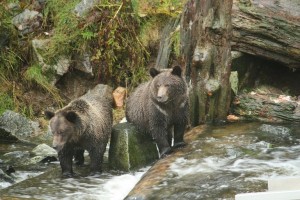
These grizzly bear siblings seem to be old enough to fish on their own but they appear to be waiting for something to happen. It could be the lack of salmon in the river or that other larger dominant bears have moved then to the sidelines. It could be perspective on my part in that when you do not have another bear use for size comparison maybe they are just very fat two year olds waiting for mother to provide another meal. However at two they should be fishing because next year they would normally be on their own. At times the cubs stay with mother more than two years and if she is not pregnant cubs may stay with their mother for four years.
Guests being ignored
